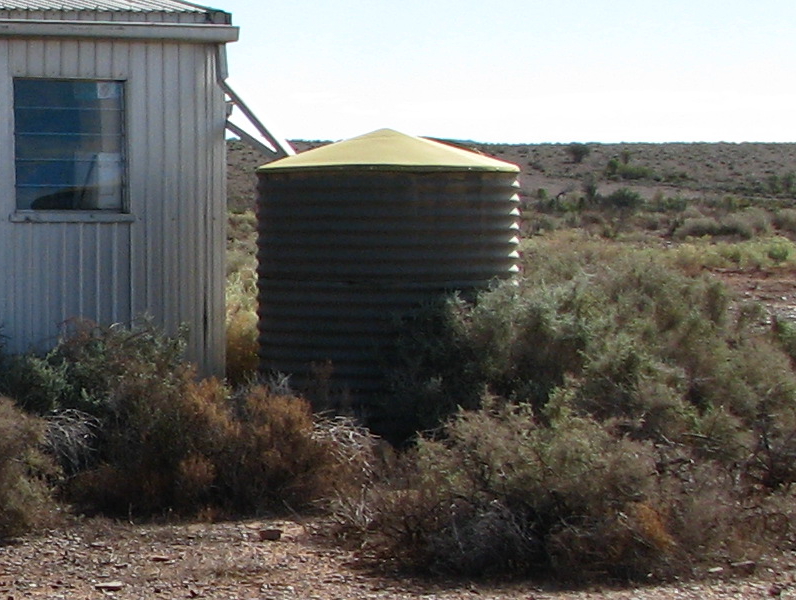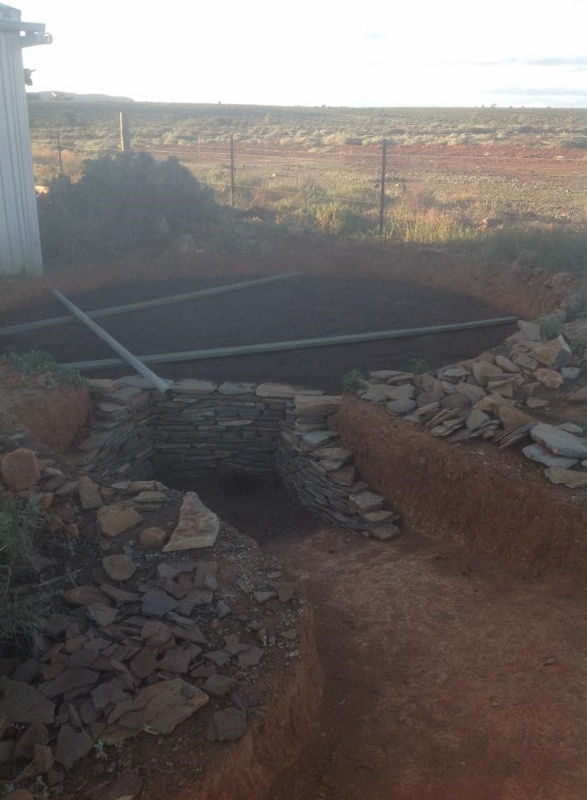For the first part of the story see this post
Now that the hole was prepared it was time to put the tank in place. This meant some interesting manoeuvring with an old forklift and a lot of checking to make sure things lined up. After about half an hour of work though it was in and I was left to plumb it to the gutters and finish the stonework around it.
Luckily Noven was able to take on the majority of the child wrangling for 10 days so that I could make a concerted effort to get the zone finished. I excavated and levelled a further section of the old stone wall and used the rocks that were unearthed to build the start of a sculptural wall that will eventually edge the front of our block, finished the dry stone wall around the tank and wheelbarrow hole, laid out some paths and spread the shale – it was a lot of work but very satisfying especially as it constitutes an area of the yard which, now that it’s planted with some succulents, is pretty much complete.
I was also pleased with the results of the stone masonry – I’ve been playing with it a bit but this was the first serious ‘start to finish’ project I’d done so its success gave me hope for the eventual major house renovations that I’m working towards becoming skilled enough to complete to my satisfaction.
Following are photos of the finished product. I’ve planted the succulents in the raised garden beds since they were taken and there’s still a bit of work to do but all in all I’m quite happy with the point it’s at now 🙂









